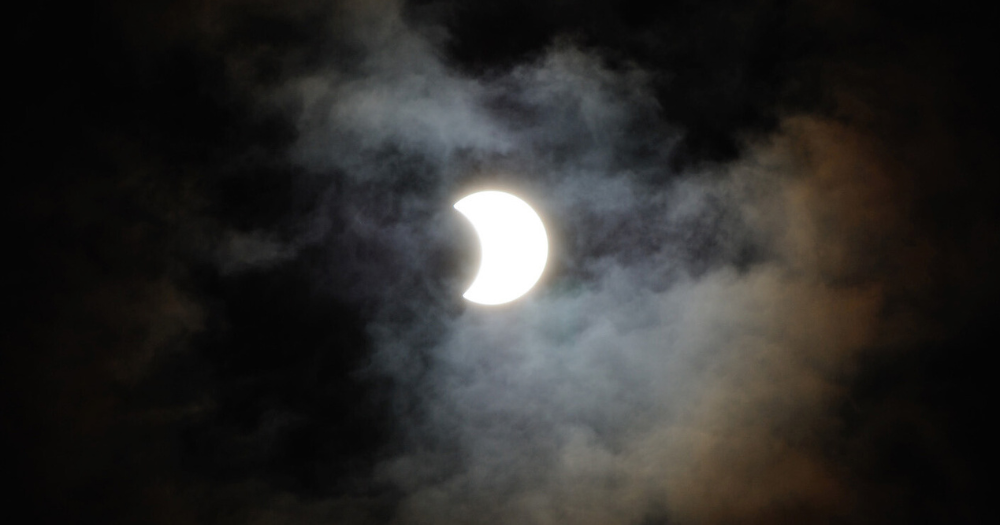Follow us on Telegram for the latest updates: https://t.me/mothershipsg
Look up at the skies on Apr. 20.
A rare hybrid solar eclipse will appear in Singapore skies for about two hours, from 10:54am to 12:58pm.
What is a hybrid solar eclipse?
A hybrid solar eclipse is when some places observe a total solar eclipse, but others experience an annular solar eclipse, according to the Science Centre Observatory.
This occurs due to the orbit of the moon and the curvature of the Earth when the eclipse occurs.
During the eclipse, the moon will be near zenith (directly above the observer) at locations such as the town of Exmouth in Australia.
Then, the moon will appear to be at its largest size, causing a total solar eclipse. This is when the moon will completely cover the sun.
However, places like Singapore, Indonesia, Philippines and Papua New Guinea are out of the complete shadow of the moon.
As only part of the sun is covered, observers here will only witness a partial solar eclipse.
In Singapore, an average of 15 per cent of the sun's disk will be covered by the moon at the peak of the eclipse.
Where and when to view the partial eclipse
The eclipse has three phases that are expected to occur:
- Start of the eclipse: 10:54am
- Maximum eclipse: 11:55am
- End of eclipse: 12:58pm
If you're interested, you can spot the phenomenon from most places in Singapore, as the sun is directly above.
Alternatively, you can head to Science Centre Singapore, as they will be hosting a viewing session at the Ecogarden from 11am to 1pm.
Science centre viewing
According to the Science Centre Observatory, telescopes will be set out, offering a "safe and magnified" view of the eclipse.
Admission charges apply, but the viewing session is complimentary with purchase of a Science Centre admission ticket.
For ticket prices, one can refer to the Science Centre's website.
Those unable to head out can view the eclipse from the comfort of their home via a livestream available on Science Centre Singapore's YouTube channel.
According to the Science Centre Observatory's Facebook page, each visitor will have about 30 seconds to look through a telescope.
Photos are allowed, but no tripod stands can be set up.
In the event of wet weather, the viewing session will stop.
The Facebook post also notes that due to security reasons, visitors are not allowed to bring or set up their own telescopes in Science Centre Singapore's premises, including the open area and carpark.
Visitors are encouraged to bring sun protection and refrain from carrying bulky items, as parts of the queue will be under the sun.
Directly viewing the eclipse with the naked eye, sunglasses or common household or vehicular solar films is insufficient and unsafe.
Those using telescopes or binoculars to view the eclipse should use proper solar filters
designed for the equipment.
Solar glasses to properly view the eclipse can be purchased from online, or at the Science Centre's Curiosity shop at S$5 each.
How often do eclipses occur?
According to the Science Centre Observatory, there are two to five solar and lunar eclipses each year on average.
A total eclipse takes place every 18 months or so.
Visibility of the eclipse depends on the location.
The next solar eclipse visible in Singapore will be on Aug. 2, 2027.
It will be a difficult one to catch, as it is a partial solar eclipse occurring during sunset.
After that, another partial solar eclipse will be visible in Singapore on Jul. 22, 2028.
Image via Wikimedia Commons.
If you like what you read, follow us on Facebook, Instagram, Twitter and Telegram to get the latest updates.
